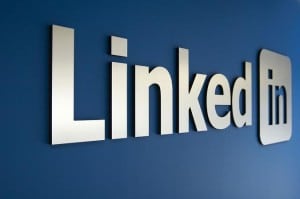
 You probably used LinkedIn at least once today to do some research (as opposed to spying) on a client or potential client, colleague within your own company, potential hire or potential new employer, or a journalist who covers your industry. So you use LinkedIn, but that doesn't mean you really know how to use it.
You probably used LinkedIn at least once today to do some research (as opposed to spying) on a client or potential client, colleague within your own company, potential hire or potential new employer, or a journalist who covers your industry. So you use LinkedIn, but that doesn't mean you really know how to use it.
If you ask Lori Russo, managing director, Mid-Atlantic, for Stanton Communications, which of the leading social networks is least understood by PR pros, she'll give you her answer before you even finish asking the question.
"Public relations professionals have done a masterful job over the past several years finding innovative ways to use popular social media platforms including Pinterest, Twitter and Facebook to drive client programs and tell their own brand stories," says Russo, who will be co-leading the session "What You Don't Know—But Should—About LinkedIn, Google+ & Reddit" at PR News' Social Media Summit in New York on June 3. "But LinkedIn remains underutilized, even though it's the one platform specifically built for a business audience."
For communications professionals responsible for growing their business and positioning their clients for growth, LinkedIn is potentially the most valuable tool in the digital arsenal. Not only does it connect organizations and individuals with peers and potential partners, it offers new opportunities to build relationships with journalists who use the site to research companies and identify sources.
Russo sees four common mistakes that PR pros habitually make on LinkedIn. How many of these are you guilty of?
1. Incomplete Profiles. LinkedIn offers an opportunity to share with the world a multimedia rich version of your professional life and experience. The platform enables you to be extensive and thorough about your experience, your capabilities and your point of view on industry issues and offers options for adding links and uploading files, including PowerPoint presentations through LinkedIn’s SlideShare integration. These files can include everything from sample campaigns to powerful media placements. Adding these enhancements and incorporating relevant keywords will make your profile more “findable” for prospects, potential employers and journalists seeking a specific kind of expertise. For agency pros, it is a good idea to offer to help clients who are subject matter experts or spokespersons build out their profiles as well.
2. Weak Contacts. LinkedIn provides a great avenue to solidify existing business relationships and build new ones. Take a moment to connect with your colleagues, your client contacts and prospects you know well. When it comes to reporters, those with whom you have an established relationship will be more than happy to connect on LinkedIn. Consider proactively inviting them to connect and use the opportunity to ask for introductions to their colleagues you would like to know. If you are using LinkedIn to connect with anyone you have not yet worked with but would like to know, be sure to include a personal note explaining why you, and possibly your clients, are relevant.
3. Inconsistent Updates. It's funny how PR pros can find the time—several times an hour or a day—to share irrelevant posts on Twitter and Facebook, yet their LinkedIn updates are few and far between. LinkedIn users who share updates at least once a week are 10 times more likely to be approached for new opportunities. These may include new clients, partners, employers, recruits or reporters looking for sources. By keeping your feed current with company and client news, articles in which you are quoted as a subject matter expert, corporate blog posts or your perspective on industry issues, you will maintain a position that is front and center on the LinkedIn news feeds of your contacts and remind reporters that you are a potential resource.
4. Outdated Company Pages. LinkedIn aims to be the primary engine for business-related searches. More and more business leaders and journalists are using the platform to find information about individuals and organizations. To ensure the information they find is fresh, accurate and relevant, consider LinkedIn a key piece of your company's (or clients' companies) content marketing plan. Offer to work with the company page manager, provide content for updates, develop creative for the header image and create Showcase Pages for prominent products and services. By providing a wealth of information in one place, you are building your organization's newsroom on a site reporters and others are already using for research.
Want to learn more about giving your a PR career a boost with LinkedIn? Register now for PR News' June 3 Social Media Summit in New York.
Follow Lori Russo: @lorirusso
Follow Steve Goldstein: @SGoldsteinAI

I will add a comment for talent search companies and headhunters..
Many don’t bother to read profiles before they start their campaign. I have a very detailed profile and I receive numerous requests from head hunters that are totally irrelevant to my 43 years of experience – often for entry level positions – I am a retired consultant,not looking for a new career and find LinkedIn to be an amazing resource for that purpose. I am willing to help a young talent search person to help define a posittion they often dont even understand and have done so…but don’t send me an Inmail without reading my profile.
btw, there are some seasoned talent search professionals that do take time to read my detailed profile and then make pertinent contact….but they are outnumbered by many others who don’t.
Great article and something that all LinkedIn users, not just PR, can benefit from…
I agree with Tom Chandler’s second comment. I also have an extensive profile with a remarkable work history detailing my skills. I have been approached on some offerings that leave me feeling like, really? I am confident but not conceded. Is this what the job market has come too?
Points 2, 3 and 4 are spot on. I think what makes it worse is when you have a person that claims to be a “social media expert,” but they can’t even use the tool properly or rarely use it to begin with. I slightly disagree with Point 1 (depending on what industry you are in). As a PR professional, I won’t build out job descriptions or share my work as I have seen job/PR competitors try to stalk my profile. I don’t want the competition to see my arsenal, so to speak. Plus, I feel like if you give it all up front, you aren’t giving employers a need to reach out to you. I always feel an in-person discussion is the best way to sell yourself to future employers. It allows you more room to tailor the info you want to give and align it with what employers are looking for. Also, not everything needs to be public knowledge.